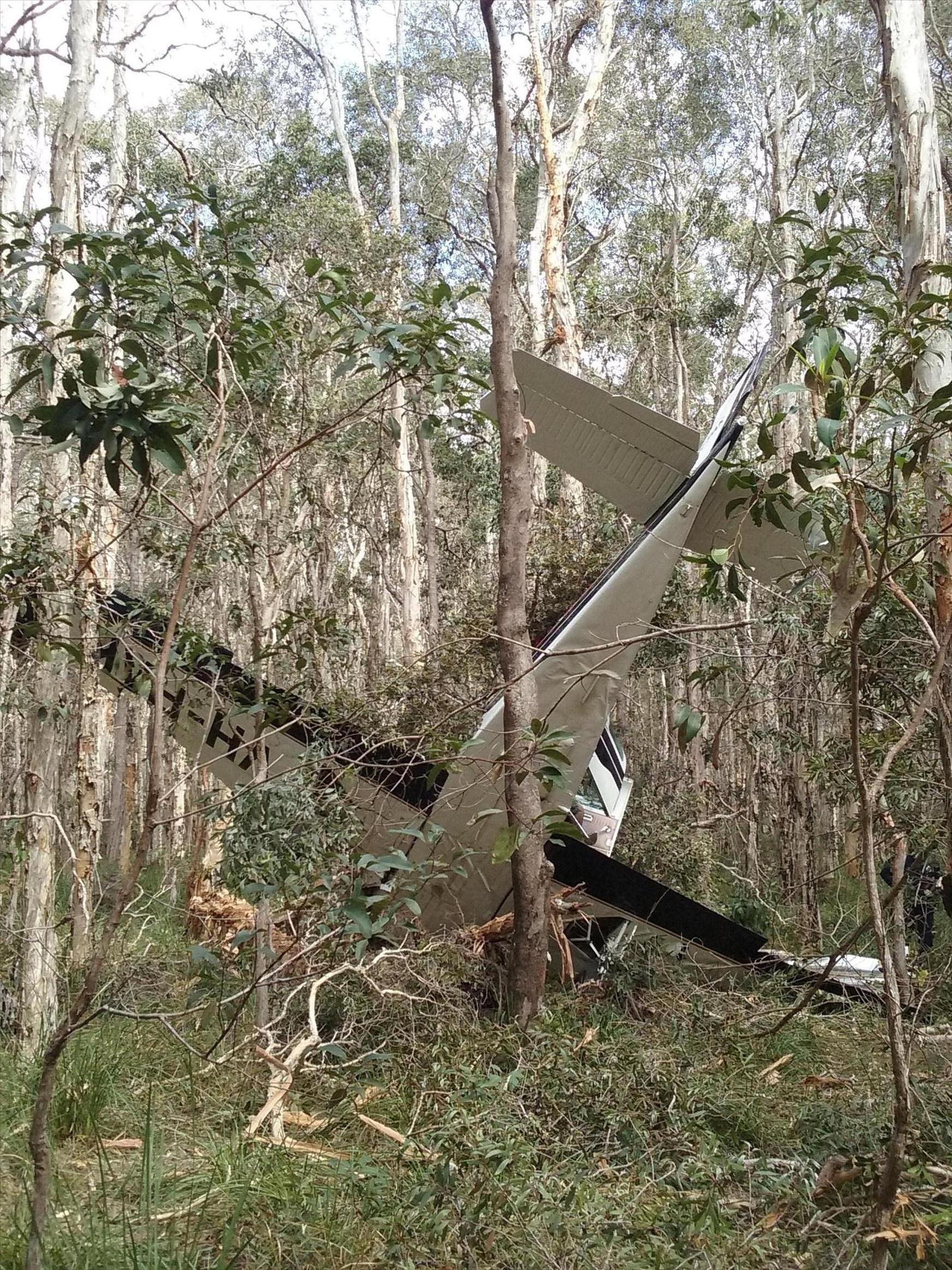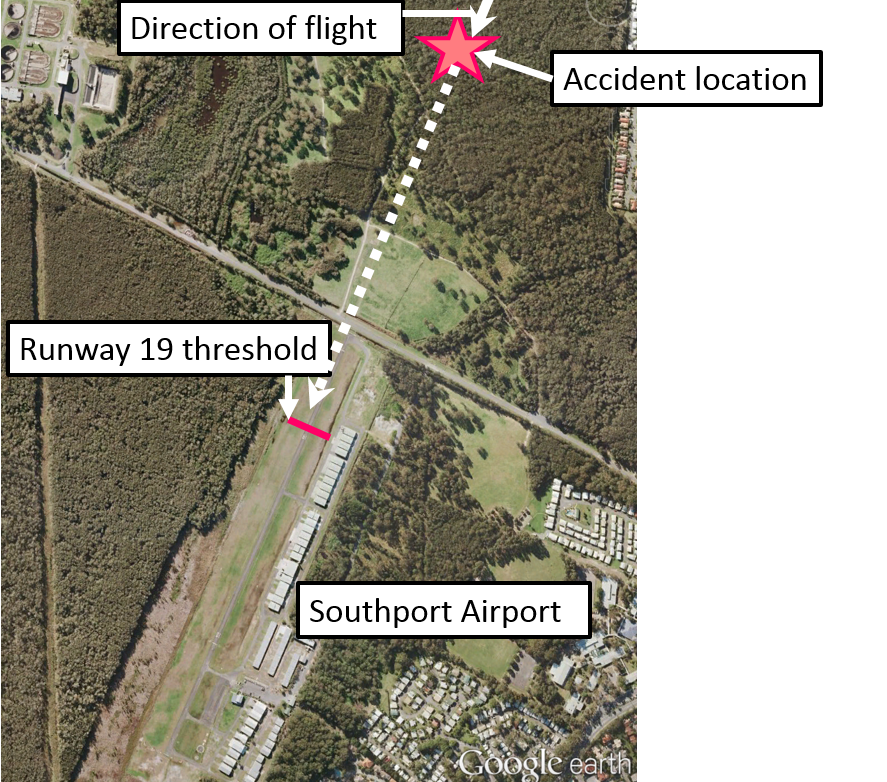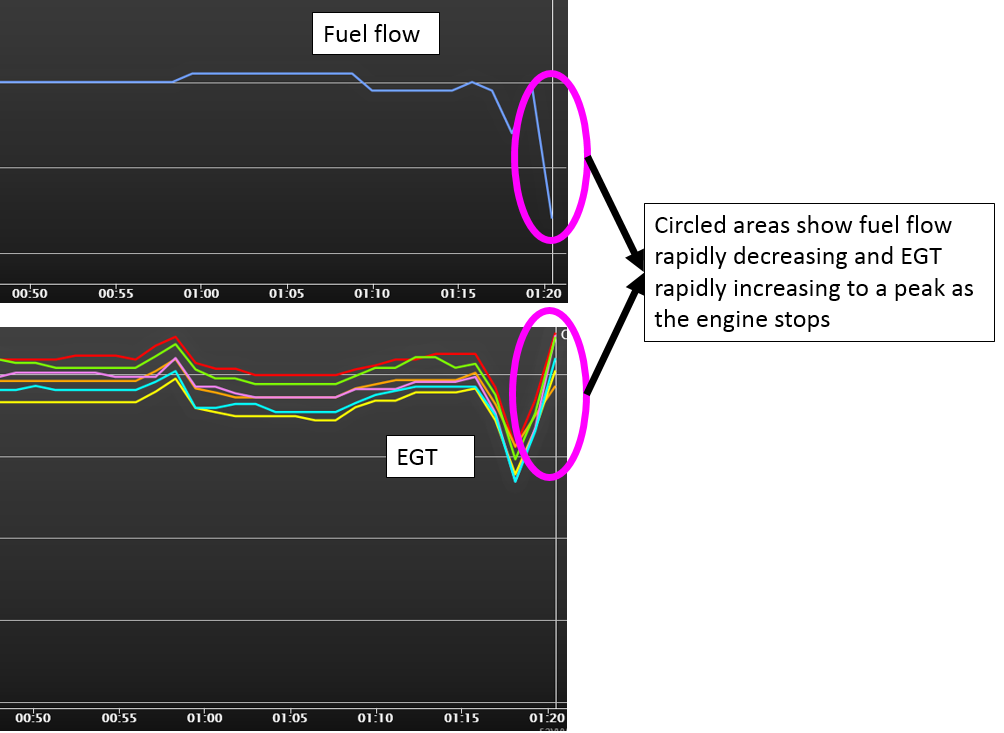What happened
On 16 August 2015, the pilot of a Beech A36 aircraft, registered VH-PAK (PAK), conducted a private flight from Pacific Haven to Southport, Queensland. The pilot reported that the aircraft engine ran normally throughout the cruise. At about 0945 Eastern Standard Time, the pilot joined the circuit at Southport Airport, with the intention to land on runway 19.
About 800 m from the runway threshold, at about 150 ft above ground level, the aircraft’s engine stopped. The pilot broadcast a Mayday[1] and conducted a forced landing (Figure 1). The aircraft collided with trees, resulting in substantial damage and the pilot was not injured (Figure 2).
Figure 1: Southport Airport and accident location
Source: Google earth – annotated by the ATSB
Pilot comments
The pilot provided the following comments:
- The pre-flight inspection was normal.
- Prior to the flight, there were 10 quarts of oil in the engine, with 12 quarts full oil capacity, and the aircraft operable to a minimum of 6 quarts.
- The engine had been running well during the flight.
- The pilot was ferrying the aircraft to Southport for its scheduled annual inspection.
- Due to the relatively short runway, the pilot conducted a shallow approach, to reduce the landing distance required.
- When the engine stopped, as the flaps and landing gear were extended, the aircraft sank quickly.
- The aircraft was fitted with an engine analyser (see Engine data section), which would generate a message to the GPS unit if a fuel tank was low on fuel. The pilot did not receive any fuel warnings.
Figure 2: VH-PAK at accident site

Source: Queensland Police
Engine data
The aircraft’s engine data was reviewed for the flight. Figure 3 shows the recorded exhaust gas temperatures (EGT) and fuel flow for the flight. During the cruise, the fuel/air mixture was leaned to achieve a fairly constant EGT around 1,500 ° Fahrenheit (816 °C). Towards the end of the flight, as the aircraft descended, the EGT decreased. About 2 minutes before the engine stopped, the EGT climbed rapidly. The peak EGT, of about 1,552 °F (844 °C), occurred as the engine stopped (Figure 3). Simultaneously, the fuel flow dropped to zero and the engine rpm increased rapidly. This is indicative of an overly lean fuel/air mixture, and is consistent with fuel starvation.
Figure 3: Engine data
Source: Provided to the ATSB
Post-accident inspection
The engine appeared intact, with all connections also intact. There was no evidence of oil loss from the engine.
During the post-accident inspection, the engineer found that only a few drops of fuel remained in the fuel control unit. The engineer drained the right main fuel tank and airframe fuel filter bowl. Less than 2 L of fuel drained from the right fuel tank, and less than 20 ml from the fuel filter bowl. The right main fuel tank was selected in the cockpit at the time of the accident.
The tip tanks and left main fuel tank were ruptured as a result of the collision, and no fuel remained in them. However, there was no evidence of fuel contamination at the accident site, and only a slight smell of fuel.
Aircraft fuel status
The aircraft had a total fuel capacity of 432 L. It had two main fuel tanks, each capable of holding 140 L of usable fuel. The aircraft was also fitted with two wing-tip tanks, each with the capacity to carry 76 L of fuel, all of which was usable.
The pilot provided a fuel receipt, which showed 389 L of fuel had been purchased on 1 July 2015 at Bundaberg. There was no evidence recorded on the maintenance release to show that the aircraft had been in Bundaberg that day. The pilot had recorded four flights from that date, including the incident flight, totalling 3 hours and 55 minutes flight time with four take-offs and three landings (not including the accident).
The pilot reported that the fuel consumption rate used for planning was 60 L per hour for the cruise, and 80 L per hour for take-off and the first hour. The pilot also stated that the fuel gauges indicated that about half fuel remained at the time of the accident.
ATSB comment
The pilot reported that about half of the aircraft’s fuel capacity remained at the time of the accident. However, the subsequent inspection found a total of about 2 L of fuel remained in the intact (and selected) right main fuel tank. The recovered engine data indicated that fuel starvation occurred at the time the engine stopped. The ATSB could not resolve the difference between the pilot’s account and the fuel state found after the accident.
Safety message
The pilot commented that if the aircraft had been higher on final approach, it would have been able to glide to the runway.
The ATSB research publication Starved and exhausted: Fuel management aviation accidents, states that accurate fuel management starts with knowing exactly how much fuel is on board at the commencement of each flight. It also relies on a method of knowing how much fuel the aircraft consumes. The likelihood of fuel starvation is reduced by adhering to procedures, maintaining a record of the fuel tank selections during flight and ensuring appropriate tank selections, particularly for take-off and landing.
Aviation Short Investigations Bulletin Issue 46
Purpose of safety investigationsThe objective of a safety investigation is to enhance transport safety. This is done through:
It is not a function of the ATSB to apportion blame or provide a means for determining liability. At the same time, an investigation report must include factual material of sufficient weight to support the analysis and findings. At all times the ATSB endeavours to balance the use of material that could imply adverse comment with the need to properly explain what happened, and why, in a fair and unbiased manner. The ATSB does not investigate for the purpose of taking administrative, regulatory or criminal action. TerminologyAn explanation of terminology used in ATSB investigation reports is available here. This includes terms such as occurrence, contributing factor, other factor that increased risk, and safety issue. Publishing informationReleased in accordance with section 25 of the Transport Safety Investigation Act 2003 Published by: Australian Transport Safety Bureau © Commonwealth of Australia 2016
Ownership of intellectual property rights in this publication Unless otherwise noted, copyright (and any other intellectual property rights, if any) in this report publication is owned by the Commonwealth of Australia. Creative Commons licence With the exception of the Coat of Arms, ATSB logo, and photos and graphics in which a third party holds copyright, this publication is licensed under a Creative Commons Attribution 3.0 Australia licence. Creative Commons Attribution 3.0 Australia Licence is a standard form licence agreement that allows you to copy, distribute, transmit and adapt this publication provided that you attribute the work. The ATSB’s preference is that you attribute this publication (and any material sourced from it) using the following wording: Source: Australian Transport Safety Bureau Copyright in material obtained from other agencies, private individuals or organisations, belongs to those agencies, individuals or organisations. Where you wish to use their material, you will need to contact them directly. |
__________




